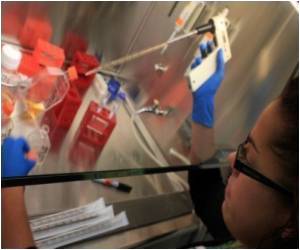
"This study establishes the foundation for a new generation of ultra-sensitive biosensors that expand opportunities for detection of biomolecules at extremely low concentrations," said Samir Mitragotri, professor of Chemical Engineering and director of the Center for Bioengineering at UCSB.
"Detection and diagnostics are a key area of bioengineering research at UCSB and this study represents an excellent example of UCSB's multi-faceted competencies in this exciting field."
Biosensors based on conventional FETs have been gaining momentum as a viable technology for the medical, forensic, and security industries since they are cost-effective compared to optical detection procedures.
Such biosensors allow for scalability and label-free detection of biomolecules - removing the step and expense of labeling target molecules with fluorescent dye.
The principle behind any FET-based biosensor is similar to the FETs used in digital circuit applications, except that the physical gate is removed and the work of the gate is carried out by charged versions of the biomolecules it intends to detect.
Advertisement
"The thermionic emission current injection mechanism of conventional FET based biosensors puts fundamental limitations on their maximum sensitivity and minimum detection time," said Banerjee, who conceived the idea in 2009 while studying the design of tunnel-FETs for ultra energy-efficient integrated electronics.
Advertisement
"The key concept behind our device is a current injection mechanism that leverages biomolecule conjugation to bend the energy bands in the channel region, leading to the quantum-mechanical phenomenon of band-to-band tunneling. The result is an abrupt increase in current which is instrumental in increasing the sensitivity and reducing the response time of the proposed sensor."
"The abruptness of current increase in an electrical switch is quantified by a parameter called subthreshold swing and the sensitivity of any FET based biosensor increases exponentially as the subthreshold swing decreases. Thus, similar devices such as Impact-ionization- or Nano-electromechanical-FETs are promising for biosensing applications," explained Banerjee.
"But since theT-FETs can be easily integrated in the widely available silicon-based semiconductor technology, they can be mass produced in a cost effective manner."
According to the researchers, their T-FET biosensor is expected to have tremendous impact on research in genomics and proteomics, as well as pharmaceutical, clinical and forensic applications - including the growing market of in-vitro and in-vivo diagnostics.
Banerjee and Sarkar have filed a patent disclosure for their technology, which the researchers anticipate can be ready for the marketplace in as few as two years.
The study has been published in the journal Applied Physics Letters.
Source-ANI









